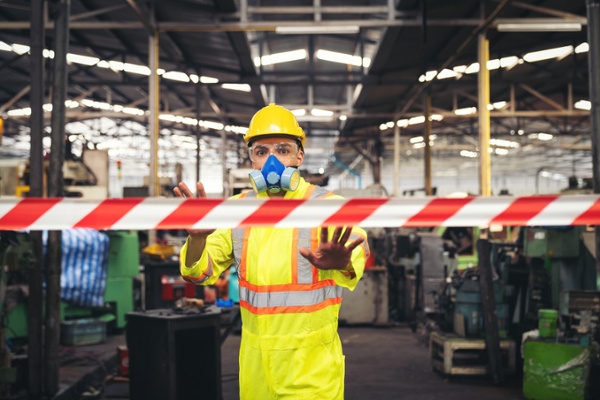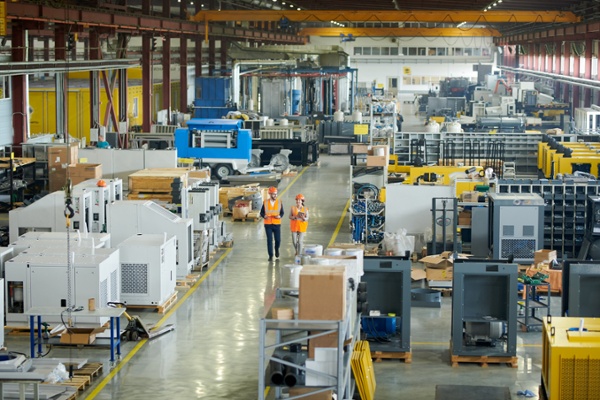You’ve been through the workplace and identified each of the chemical hazards. You took action to ensure that every hazard was thoroughly evaluated; assessing the potential to cause dangerous incidents, death, or injury. You introduced chemical control measures — things like ventilation systems, dedicated chemical stores, PPE, emergency showers — and in some cases, you may have completely eliminated the hazard. What now? Are your WHS responsibilities finished?
Whenever chemical hazards are present at a worksite, you have a WHS obligation to maintain safety — even if you don’t know a hazard exists. Sometimes it takes a HAZCHEM safety review to uncover an unknown hazard that has the potential to cause damage or other unnecessary suffering to your staff and community.
This post takes a closer look at the chemical control review process and explains when risk controls should be reviewed.
What Is A Chemical Hazard Review?
A chemical hazard review is simply a series of actions that actively monitor a chemical hazard and any introduced control measures to make sure the controls are working and exposure to the chemical is minimised or completely eliminated.
You can use a wide range of tools to conduct a chemical hazard review including:
- Physical inspections, observations, and safety audits
- Chemical exposure assessments and testing
- Accident, incident, injury and illness reviews and tracking
- Employee consultation, input, and feedback

Chemical hazards can create dangerous situations for staff and the wider community, including physical harm.
When Should Risk Controls Be Reviewed?
The review process presents a series of questions, but we feel these three are the most important.
- Have the controls adequately contained the risk and solved the problem?
- What new hazards been created?
- Is there anything else that could be done?
Hazardous Chemicals Systems Review Triggered By Incidents
As much as you try to be proactive when implementing risk controls, many times a chemical hazard review is conducted in only after a workplace accident, incident, or illness has occurred.
Sometimes concerned workers will be the ones to request a review as new relevant hazards are identified.
A review would also be needed after the following incidents:
- Test results indicate that a worker has an unacceptable level of chemical particles or residue in their body
- Air monitoring indicates chemical exposure levels are above the permitted workplace exposure standards
- A notifiable incident occurs onsite
- The workplace is affected by severe weather or a damaging natural disaster
- Consultative teams and WHS representatives believe a review is necessary
- Sick leave records or other test results indicate a worker may have been injured or become ill because of the chemical hazard
IMPORTANT: Control measures rarely work if workers are not notified of changes to their work areas or individual job tasks. You should always update your staff induction and training programs to deal with new situations.
Reviews Triggered By Change
Workplaces are dynamic and constantly evolving, so a chemical hazard review will be necessary as the workplace undergoes change.

Workplaces are constantly changing, so reviews must be conducted to make sure hazardous chemical controls are still viable.
Examples include:
- Changes to operating procedures or work areas
- When undertaking renovations, expansions, closure or transferring the location of job site
- New Safety Data Sheets (SDSs) are issued for the chemicals
- Staff turnover, a change in management, or engagement of a new contracting company
- Installation of new equipment, machinery, mechanical aids, vehicles
- Legislation changes, Australian Safety Standards are updated, or a new Code of Practice is released
IMPORTANT: Chemical hazard reviews are especially important on construction, mining, manufacturing, and agricultural job sites where change is central to the way you do business.
Scheduled HAZCHEM Safety Reviews
Even if you have had no incidents or major changes at the worksite, chemical control measures still require review — equipment deteriorates, machines and mechanical devices don’t operate with the same efficiently, PPE gets lost or broken.
Therefore, your risk management plan should already have review mechanisms in place in the form of site inspections, review audits, and preventative maintenance.
We suggest building into your risk management plan mechanisms for:
- Hazard reviews based on anniversaries of chemical purchases or installation dates of safety equipment and chemical stores
- Reviewing each chemical hazard at least once every 5 years — Safety Data Sheets (SDSs) are always updated every 5 years
- Quarterly safety audits conducted by external safety consultants who specialise in hazardous chemicals and dangerous goods storage
- Daily site inspections by managers, supervisors and team leaders (especially before/after shift changes)
- Holding bi-monthly meetings of the Safety Committee who discuss work procedures and concerns
- Scheduling quarterly maintenance and integrity testing of chemical storage containers and other safety equipment
EXPERT TIP: Keeping accurate records of your risk assessments is important for demonstrating how you are complying with the WHS Act and Regulations. It also useful when undertaking your chemical hazard reviews.
Learn More About Hazardous Chemicals System Review
Chemical safety compliance can’t be achieved until your risk management plan has systems in place to ensure chemical hazards and control measures are regularly reviewed. Find out how to introduce a 4-step risk management methodology with the necessary review mechanisms by downloading our free eBook. How to manage the risk of Hazardous Chemicals in the workplace is easy to understand and reading it won’t take all day. Access your copy now to learn more about hazardous chemical system reviews and achieving compliance in your workplace.
Joining the team as a Dangerous Goods Storage Consultant, Melissa Hampton became Storemasta's Marketing Manager in late 2021. With extensive knowledge and experience in chemical compliance, Melissa is responsible for leading the Marketing team and helping shape their marketing strategy. In her spare time, you can find Melissa hiking, swimming and enjoying the great outdoors in beautiful north-west Tasmania.
